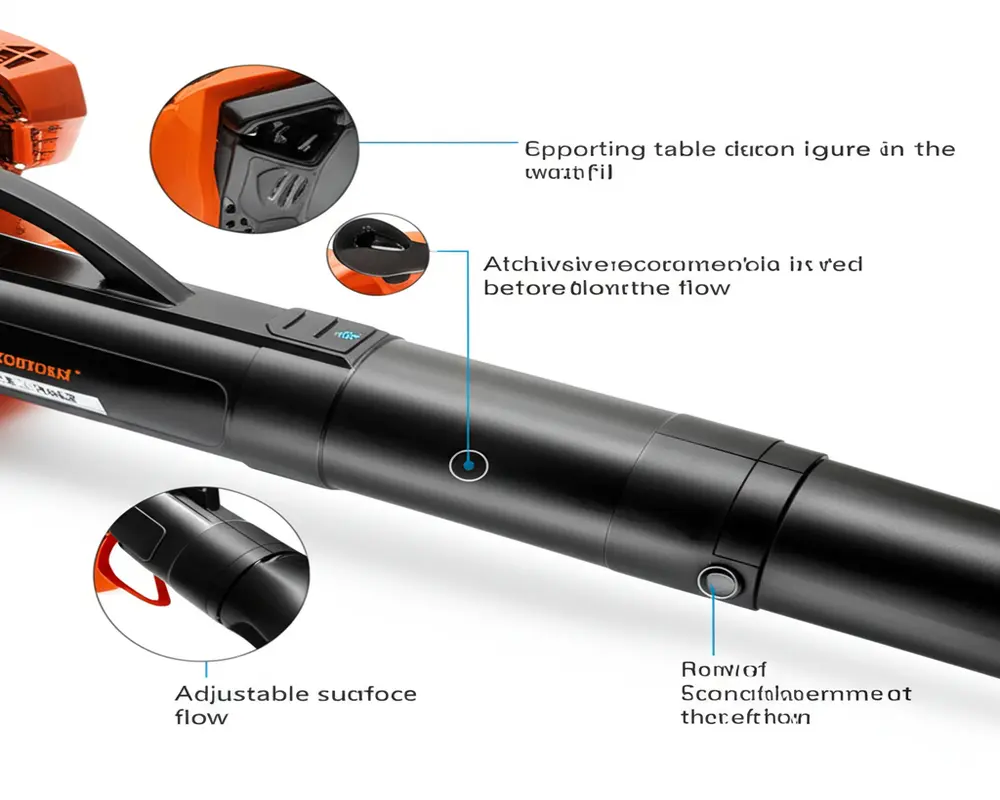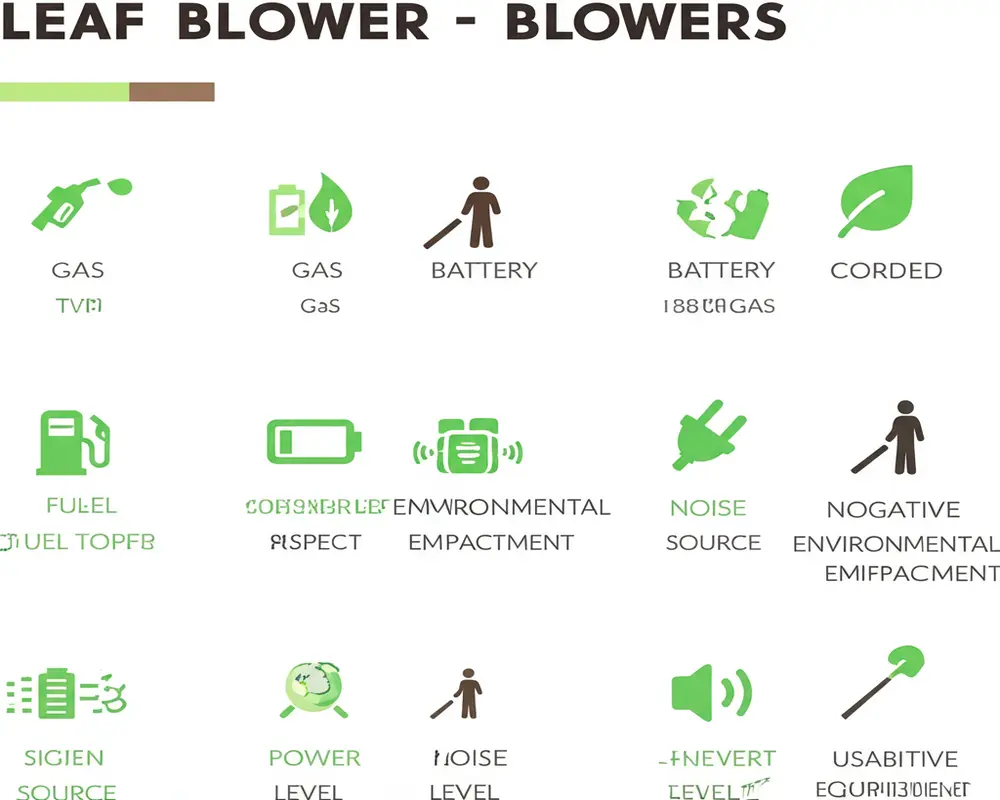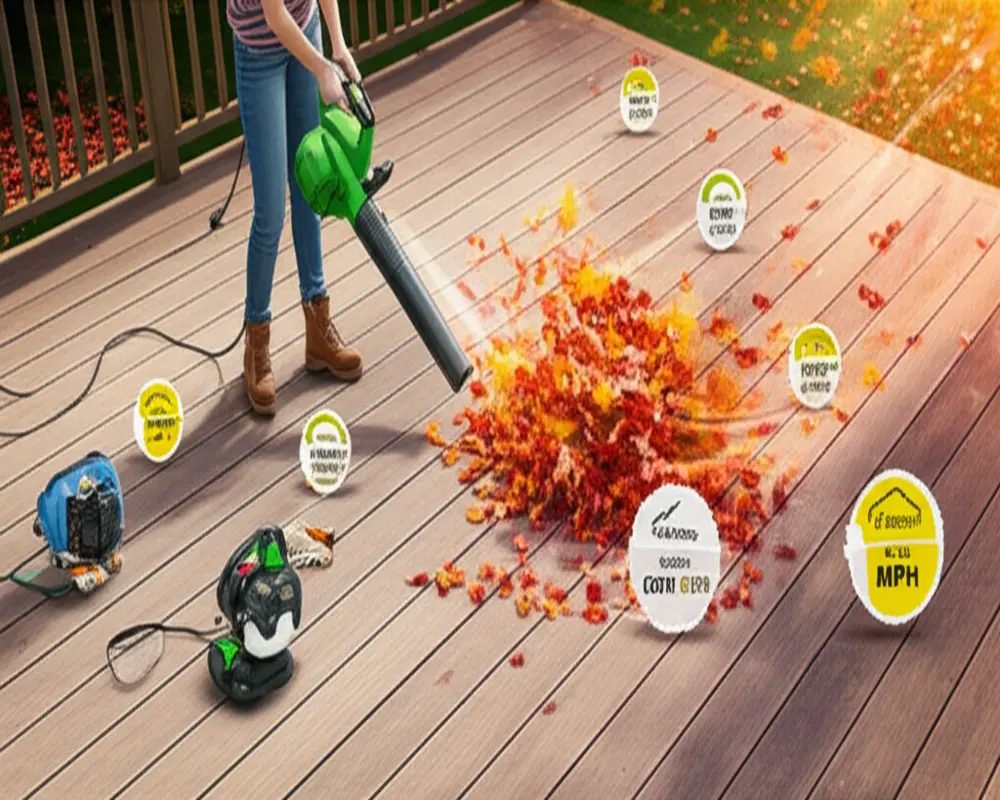Leaf Blower Buying Guide: Choose the Best Blower for Your Yard
Clearing your yard of leaves and debris can be a daunting task, especially during the fall season when leaves accumulate rapidly. A leaf blower is an essential tool that can simplify this chore, saving you time and effort. This comprehensive leaf blower buying guide for 2025 covers everything you need to know—from understanding different leaf blower types and key leaf blower features to expert tips on selecting the right model for your yard. Whether you’re a first-time buyer or upgrading your equipment, this guide will equip you with the knowledge to make an informed purchase that suits your specific needs.
Understanding Leaf Blower Power & Performance Metrics
When selecting a leaf blower, it’s important to understand the metrics that define its power and performance. Two primary measurements are CFM (Cubic Feet per Minute) and MPH (Miles per Hour).
CFM measures the volume of air the blower moves. A higher CFM indicates the blower can move more debris at once, which is crucial for large piles of leaves or heavier materials. Conversely, MPH measures the speed of the air stream. This is essential when dealing with stubborn, wet, or compacted debris that requires strong air pressure to dislodge.
The ideal leaf blower balances both CFM and MPH to deliver efficient clearing power. For example, a blower with 400 CFM and 150 MPH will push a large volume of air at a high speed, suitable for most residential needs.
Noise levels, measured in decibels, are also a critical consideration. Many localities restrict the noise levels of leaf blowers, so opting for quieter models can prevent disturbances and comply with regulations. Ergonomics and weight impact user comfort and fatigue during prolonged use. Lighter, well-balanced blowers reduce strain and make maneuvering easier.
Some models offer additional functions such as mulching and vacuuming. Mulching reduces leaf volume by shredding them, which is useful for composting. Vacuuming capabilities allow you to collect debris directly into a bag, simplifying cleanup. When considering vacuum features, pay attention to bag capacity to avoid frequent emptying.

Types of Leaf Blowers: Pros, Cons & Ideal Uses
Electric (Corded) Leaf Blowers
Electric corded leaf blowers are known for their quiet operation and lightweight design. They deliver consistent power as long as they’re plugged in, making them ideal for small yards and light debris. However, their range is limited by the length of the power cord, which can restrict mobility and require extension cords for larger areas.

Cordless (Battery-Powered) Leaf Blowers
Cordless leaf blowers offer the freedom of mobility without the hassle of cords. Their performance depends on battery voltage and runtime, with higher voltage models providing more power but often at a higher price point. Battery life limits continuous use, so having spare batteries can be beneficial for larger jobs. They produce no emissions and are generally quieter than gas models, making them suitable for small to medium yards.
Gas-Powered Leaf Blowers
Gas leaf blowers are the powerhouse option, offering high CFM and MPH ratings to tackle large properties and dense debris. They come with either 2-stroke or 4-stroke engines; 4-stroke models tend to be quieter and more fuel-efficient but are heavier and more expensive. Gas blowers require regular maintenance and produce more noise and emissions, which might not be suitable for all neighborhoods.
Form Factors: Handheld, Backpack, Walk-Behind
Leaf blowers come in different form factors to suit various user preferences and yard sizes. Handheld blowers are lightweight and easy to maneuver for quick jobs. For larger properties, backpack blowers distribute weight across your back for reduced fatigue and greater power. Walk-behind blowers are less common but effective for expansive lawns, combining blower power with ease of use while pushing the unit.
How to Choose the Right Leaf Blower: Decision Framework
Choosing the perfect leaf blower depends on several factors:
- Yard Size and Layout: Small yards with light debris may only require an electric or cordless model, while larger properties benefit from gas-powered or backpack blowers.
- Debris Type and Volume: Heavier, wet leaves need higher airspeed (MPH), while large volumes require higher CFM.
- Power Source Preference: Consider whether you prefer electric convenience or the power of gas models.
- Budget: Factor in upfront costs and long-term expenses such as fuel, batteries, or maintenance.
- Storage and Transport: Compact models are easier to store and transport compared to bulkier gas units.
Top-Rated Leaf Blowers: Expert Recommendations
Our expert recommendations are based on hands-on testing, performance metrics, and user feedback to help you find the best leaf blower for your needs:
| Category | Recommended Model | Key Specs | Pros | Cons | Best For |
|---|---|---|---|---|---|
| Best Overall | Ego Power+ LB5804 | 560 CFM, 145 MPH, 56V Battery | Powerful, quiet, long battery life | Higher price point | Most residential yards |
| Best Cordless | DeWalt DCBL720P1 | 400 CFM, 90 MPH, 20V Battery | Lightweight, easy to use | Shorter runtime | Small to medium yards |
| Best Gas Backpack | Stihl BR 600 | 590 CFM, 180 MPH, Gas Engine | High power, ergonomic | Heavy, noisy | Large properties |
| Best Budget-Friendly | Black+Decker BV5600 | 350 CFM, 150 MPH, Corded Electric | Affordable, reliable | Limited range | Small yards |
| Best Quiet Model | Greenworks 40V Cordless | 400 CFM, 125 MPH | Low noise, cordless | Battery runtime | Neighborhood-friendly use |
| Best Vacuum/Mulcher Combo | Craftsman M210 | 230 CFM, 170 MPH, Gas Engine | Versatile, mulching | Weight, noise | Yards needing debris collection |
| Best Lightweight Model | Ryobi Cordless 18V | 350 CFM, 130 MPH | Easy to handle, portable | Less power | Light debris, small yards |
For detailed reviews and comparisons, check the Consumer Reports Leaf Blower Reviews and Popular Mechanics Lawn Tools.
Leading Leaf Blower Brands
Several brands stand out for their reliability and innovation in leaf blowers:
- Ego: Known for powerful, long-lasting cordless models.
- Ryobi: Offers budget-friendly cordless options with solid performance.
- DeWalt: Durable tools favored by professionals and homeowners alike.
- Stihl: Renowned for robust gas-powered blowers and backpack models.
- Husqvarna: Strong gas models with ergonomic designs.
- Greenworks: Focuses on quiet, environmentally friendly electric blowers.
- Black+Decker: Affordable corded and cordless options for smaller jobs.
- Craftsman: Versatile products including mulcher vacuum combos.
Essential Accessories and Safety Tips
Using a leaf blower safely is paramount. Recommended protective gear includes hearing protection, safety glasses, and gloves to protect against noise, dust, and debris. Always clear the area of pets and bystanders before starting. Follow manufacturer instructions for proper use and avoid operating blowers in wet conditions to prevent accidents.

For more on garden tool maintenance and safety, visit our guides on garden spade maintenance and hand cultivator buying guide.
Basic Maintenance Tips for Longevity
Proper maintenance extends the life of your leaf blower:
- Gas Blowers: Regularly clean or replace air filters, inspect spark plugs, and use fresh fuel mixed at the correct ratio for 2-stroke engines.
- Electric Blowers: Keep vents clear of debris and clean battery contacts to ensure optimal performance.
- General: After each use, wipe down the blower and inspect for loose parts or damage. Store in a dry place to prevent rust and corrosion.
Leaf Blower FAQs
What CFM and MPH ratings are typical for home use?
Home leaf blowers typically range from 300 to 600 CFM and 100 to 180 MPH, sufficient for most residential clearing tasks.
Are there regulations on gas-powered leaf blowers?
Yes, the EPA regulates emissions, with many areas enforcing noise limits and restrictions on gas blower usage to reduce pollution and noise.
How long does a cordless leaf blower battery last?
Battery life varies but generally ranges from 20 to 60 minutes per charge depending on voltage and workload. Having additional batteries can extend continuous use.
Can leaf blowers be used on wet or heavy debris?
High-powered blowers with strong airspeed can manage damp leaves, but wet debris is generally more challenging and may require additional effort or mulching features.
Are vacuum and mulcher combos worth it?
These combos provide versatility by allowing leaf collection and volume reduction, ideal for users who want to minimize yard waste disposal.
How noisy are leaf blowers?
Noise levels vary; electric models are quieter (typically 60-70 decibels), while gas blowers can exceed 90 decibels, which may require hearing protection.
What maintenance schedule should I follow?
Regularly clean or replace filters, check spark plugs (gas models), maintain batteries (electric), and inspect the blower after each use for optimal longevity.
Conclusion: Your Perfect Leaf Blower Awaits
Choosing the right leaf blower involves assessing your yard size, debris type, preferred power source, and budget. By understanding key metrics like CFM and MPH, exploring different blower types, and considering features that enhance comfort and efficiency, you can find a model that fits your specific needs. With proper care and safety precautions, your leaf blower will be a reliable partner in keeping your yard clean and tidy throughout the seasons. Take confidence in your purchase with this expert-backed guide and enjoy effortless yard maintenance.

